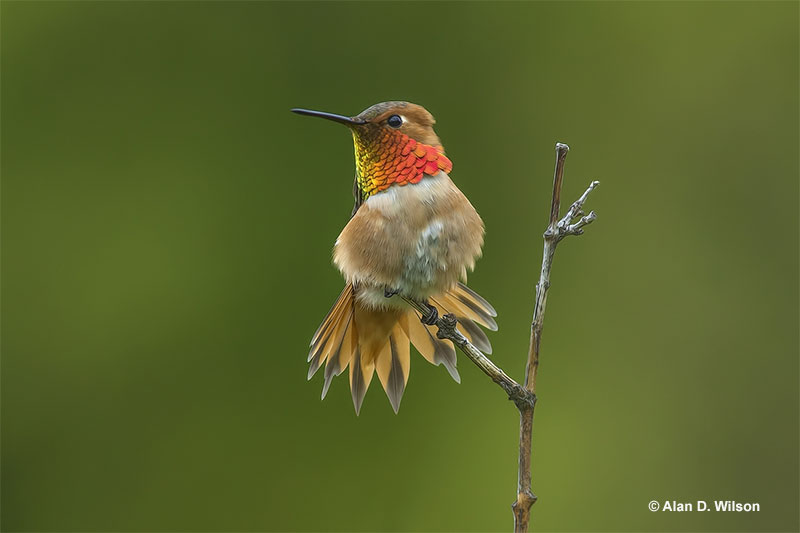
So, you want to know more about hummingbirds? These iridescent jewels, with their unique adaptations, are a fascinating subject of study indeed. From the bare basics to their survival strategies, we have gathered 15 interesting hummingbird facts to get you started!
On this page
- #1 There are over 360 hummingbird species
- #2 Only in the Americas
- #3 Colorful marvels
- #4 Flying jewels
- #5 And one species is the smallest bird in the world!
- #6 Beautiful courtship displays just for one-night stands
- #7 Hummingbird nests are architectural marvels
- #8 Feisty nature
- #9 Dietary preferences
- #10 Hummingbirds like colorful flowers
- #11 Remarkable memory
- #12 Hummingbirds enter a stage called torpor
- #13 Hummingbirds wings beat extremely fast
- #14 Lone migrator, yet longest migration
- #15 Hummingbirds’ feet are almost useless
#1 There are over 360 hummingbird species
Hummingbirds, constituting the family Trochilidae, enchant us with their vibrant colors and remarkable flight capabilities.
Related: Bird families & classifications
According to estimations, there are around 363 hummingbird species. Of those, 28 are listed as endangered or critically endangered, with many more of them having declining populations.
However, new hummingbird species are still being discovered. The latest discovery was the Blue-throated Hillstar in 2017 in a limited area in the Andes in Ecuador.
In addition to that, the world of hummingbirds witnessed intrigue in 2023, as researchers initially believed they stumbled upon a new species in Peru, characterized by an iridescent golden throat.

Subsequent investigations revealed a fascinating twist – it was a hybrid between two pink-throated hummingbirds. And based on genetic testing, its ancestors were likely hybrids as well, explaining how parents with pink throats ended up with golden-throated offspring!
#2 Only in the Americas
Hummingbirds are exclusive to the Americas, spanning from as far north as Alaska to as far south as Tierra del Fuego. Most species thrive in tropical and subtropical areas of Central and South America. Ecuador boasts the highest diversity, hosting over 132 species, which constitute 40% of the total hummingbird species.
Related: What are the Nazca lines?
However, hummingbirds are remarkably adaptable. Some species also breed in temperate climates, and some brave the alpine Andean heights, reaching up to 17,100 ft. North America has stood witness to at least 23 species, although some of them are vagrant species making surprise visits.
Some common hummingbird species in North America include the Ruby-throated Hummingbird, Anna’s Hummingbird, and Rufous Hummingbird.
#3 Colorful marvels
The hummingbird family outshines all other bird species combined when it comes to color diversity. And since hummingbirds can also see ultraviolet light, they even add ultraviolet colors to the mix!
However, most of the colors we can see on hummingbirds are not a result of pigments. The dazzling color display has to do with the structure of their feathers and is called iridescence.
In this case, the smallest filaments of their feathers (‘barbules’) are made up of thin, layered, air-filled structures. Depending on their thickness and spacing, they produce different colors when light interacts with them.
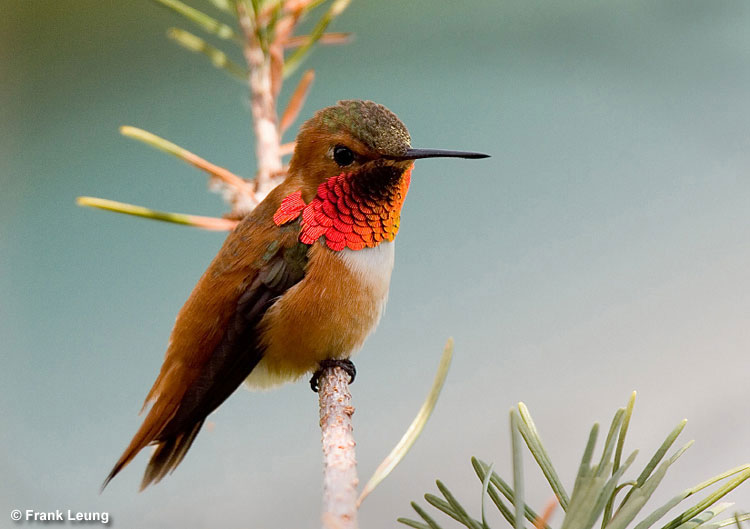
This vivid display serves essential functions, as plumage is pivotal in territory defense and mate attraction. Male hummingbirds typically have gorgets, iridescent throat patches, for this exact purpose. In the rare cases where females have them too, it is typically used to signal threats.
#4 Flying jewels
Hummingbirds, adorned with their stunning iridescent colors, inspire exquisite names and terms from how they’re referred to as a whole to individual species’ names. A flock of hummingbirds can be referred to as a charm, a glittering, a hover, or a bouquet, which captures their dazzling appearance, flight style, and affinity for flowers. They are also lovingly called flying jewels.
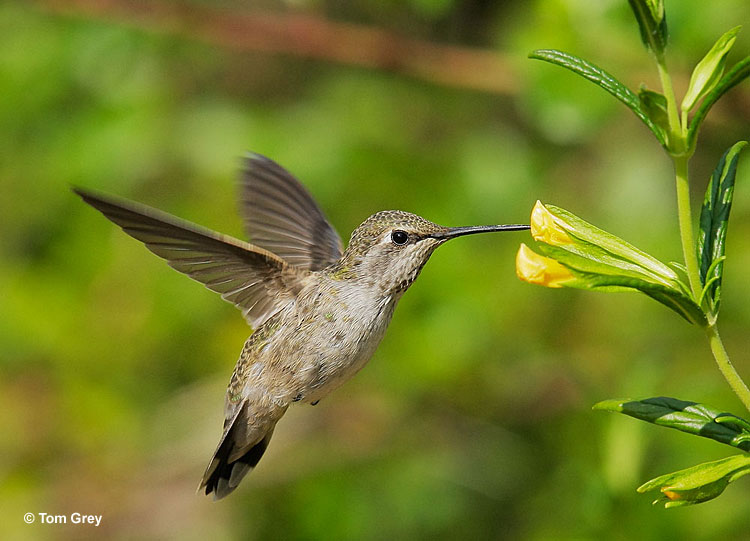
Hummingbirds have a unique flying style, allowing them to hover in the air.
Getting a bit more specific, hummingbird names often feature gems like ruby, emerald, topaz, sapphire, and amethyst.
Related: How to attract hummingbirds?
Additionally, some are also named after mythical creatures, such as fairy, sylph, woodnymph, and Lucifer. One of the most magnificent species names (in my humble opinion) was the Royal Sunangel.
#5 And one species is the smallest bird in the world!
Hummingbirds claim the title of being the world’s smallest birds, with males generally being smaller than females. The epitome of diminutiveness is the Bee Hummingbird, which measures slightly over 2 inches and weighs just under an ounce. There are both upsides and downsides to this.
Read more: Bird facts that will blow your mind!
Being small in size, they do not need as much resources for survival and have an easier time evading predators. However, they also have more natural predators. The Bee Hummingbird, for example, can fall prey even to wasps, frogs, and spiders!
In contrast, the largest among the hummingbird family is the Giant Hummingbird, reaching up to 9.1 inches in length.
#6 Beautiful courtship displays just for one-night stands
Hummingbirds engage in intricate courtship rituals, showcasing agility, vibrant plumage, and vocal prowess. You may see males perform rapid and steep dives from great heights, sometimes pulling up sharply at the last moment.
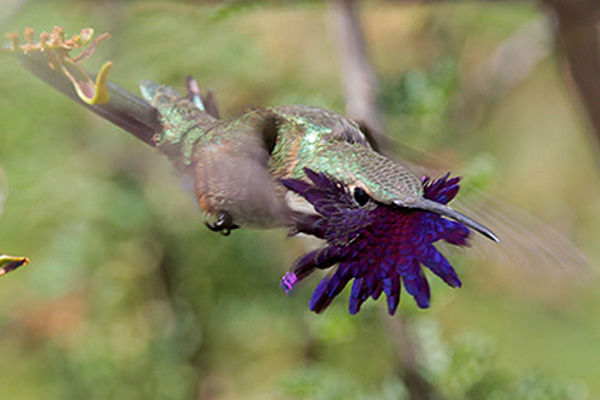
Hummingbirds have incredible displays, but this Lucifer Hummingbird looks rather angry. Maybe he had some competition!
Some fly in U-shaped patterns, creating loops and arcs in the air. Their plumage is a visual spectacle designed to captivate females while warding off rival males. They use chirps, buzzes, trills, and feather-and-tail-induced noises to garner even more attention from the opposite sex.
Despite the elaborate rituals, hummingbirds do not form lifelong bonds; their unions are brief, focusing solely on mating. Once the mating is complete, the female assumes full responsibility from building the nest to raising the young without the male.
#7 Hummingbird nests are architectural marvels
Hummingbird nests and eggs are even smaller than the birds themselves. The Bee Hummingbird, the tiniest of its kind, lays eggs the size of a coffee bean in a nest no larger than a quarter.
Ingeniously, hummingbirds incorporate spider silk into their nests, which allows them to expand as the clutch grows. Other common nest materials include fine plant fibers, lichen, and moss.
Surprisingly, hummingbirds have been found nesting in unconventional spots like wind chimes, light fixtures, string lights, and garden decorations. However, you generally won’t be able to spot a hummingbird’s nest in the wild. Their diminutive size and camouflage make them extremely challenging to spot.
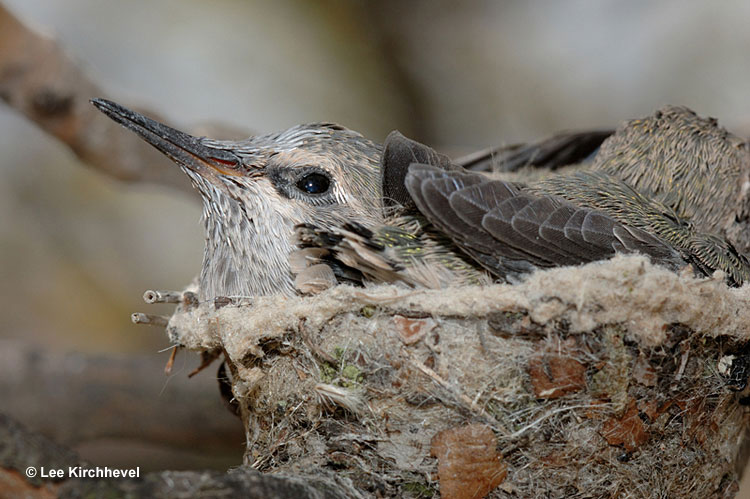
#8 Feisty nature
Despite their diminutive size, hummingbirds exhibit remarkable aggressiveness, attributed to their need to defend crucial feeding territories. This stems from the necessity to sustain their exceptionally high metabolic rate, which makes it necessary for them to feed about every 15 minutes.
With heartbeats soaring up to an astonishing 1,260 beats per minute, these tiny dynamos must consume approximately twice their weight daily. This constant quest for sustenance drives them to visit possibly more than 1000 flowers each day!
#9 Dietary preferences
So, what do hummingbirds eat, exactly? Primarily, their diet revolves around nectar. They supplement it with small insects, tree sap, and the occasional visit to hummingbird feeders for sugar water.
Their tongues are adapted for extracting nectar and have grooves that act like little pumps as they contract tongue muscles while feeding. Tiny hairs at the tongue’s tip aid in lapping up nectar even further.
#10 Hummingbirds like colorful flowers
Hummingbirds are specialized nectarivores. Some of them, particularly evident in those with unique bill shapes like the Sword-billed Hummingbird or sicklebills, have coevolved with specific flower species.
Related: Plants that attract hummingbirds
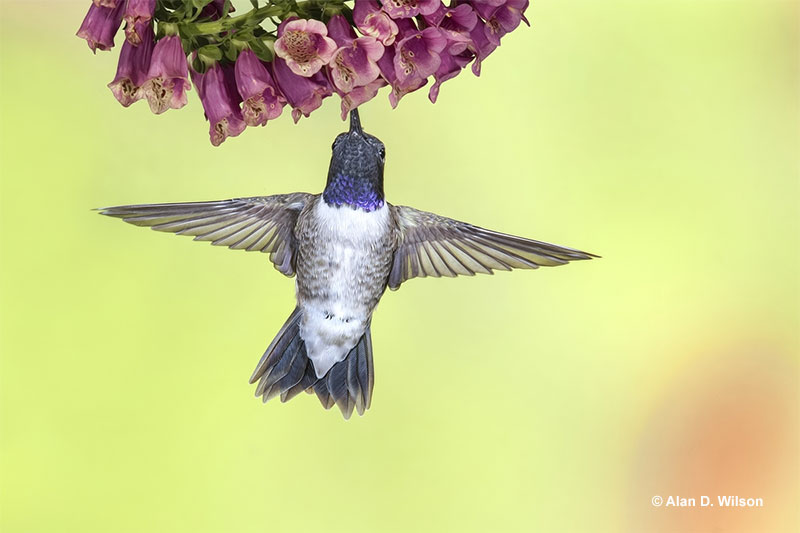
Despite their almost non-existent sense of smell, hummingbirds have excellent hearing and sight. They are particularly drawn to vibrant colors, showing a preference for shades of red, orange, and bright pink.
However, it’s crucial not to color sugar water in hummingbird feeders, as it can be harmful to these small birds.
#11 Remarkable memory
Hummingbirds have the largest brains relative to body size among birds.
They have remarkable memory, which, according to research, allows them to recall every flower and feeder they have visited, along with the time it takes for a flower to refill.
Bird enthusiasts have also noticed that if you happen to move a hummingbird feeder to a new spot after the hummers have left for their wintering grounds, then come next year, they will look for the feeder in its old spot.
#12 Hummingbirds enter a stage called torpor
Hummingbirds have a unique survival strategy known as torpor, wherein their metabolism slows during periods of food scarcity, cold, or at night. In a state of torpor, a hummingbird might appear lifeless, even hanging upside down from feeders or tree branches. It is crucial to leave them undisturbed if encountered in this state.
The lowest body temperatures during torpor vary between species and individuals, with durations ranging from 2 to 13 hours. Notably, the lowest recorded body temperature for a bird was from a hummingbird Metallura phoebe in the Andes mountains, dropping to 38°F during nocturnal torpor.
Researchers observed that extended torpor periods correlated with reduced body mass loss, as the birds utilized stored fat to maintain minimal warmth for survival.
#13 Hummingbirds wings beat extremely fast
Hummingbirds earned their name from the distinctive humming sound produced by their rapid wing beats. Averaging 50-80 wing beats per second, they can reach an astounding 88 beats per second and even more in extreme flight. They can fly up to 37 mph and up to 60 mph in courtship dives.
Related: Do hummingbirds mate for life?
Hummingbirds are rather unique among birds because they are one of the few species that can hover and the only ones that can fly backward. Species in high-altitude environments, where air density diminishes, have evolved to have larger wings to offset the increased power required for hovering.
#14 Lone migrator, yet longest migration
Hummingbirds are the smallest migrating birds. However, only 12-15 hummingbird species undertake annual migrations, and they do so alone.
The Rufous Hummingbird stands out with having the longest distance to migrate in terms of body length and migration distance. Measuring a mere 3 inches, it has to cover 3,900 miles from Alaska to Mexico.
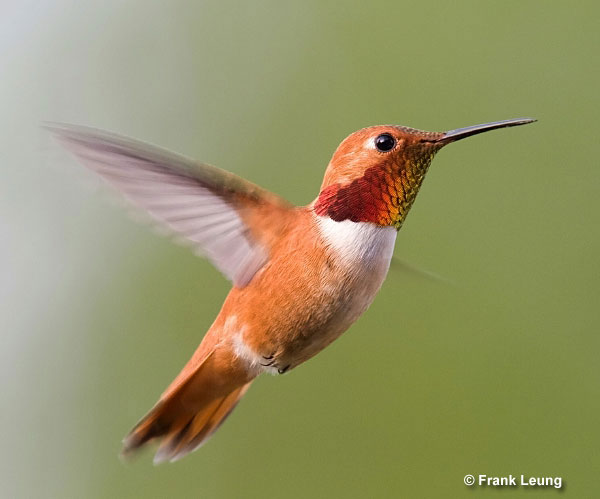
These small bodies are capable of tackling thousands and thousands of miles during migration!
This equates to an astounding 78,470,000 body lengths.
Comparatively, the 13-inch-long Arctic Tern travels 11,185 miles, covering more miles. However, in terms of body length and route ratio, it flies “only” 51,430,300 body lengths (65% of what the Rufous Hummingbird covers).
#15 Hummingbirds’ feet are almost useless
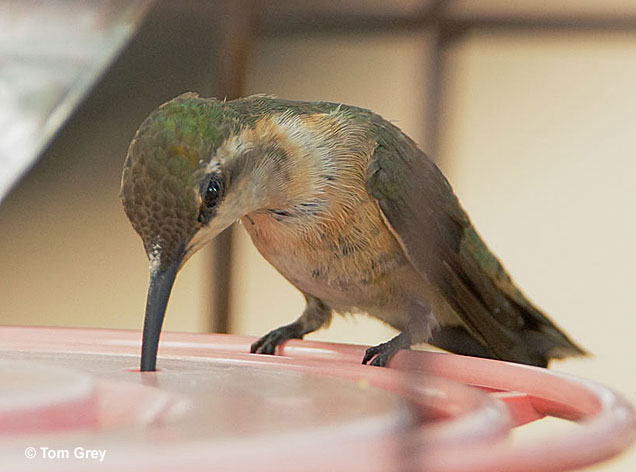
While hummingbirds have a distinct advantage when it comes to flight and surviving periods of cold and food scarcity, then they do have their disadvantage as well.
Namely, hummingbirds’ feet aren’t very useful. They are short and have no knees. As a result, they can’t walk or hop. They can only use them to perch, shuffle sideways on a branch, or scratch themselves.
Did you enjoy these facts about hummingbirds? Let us know in the comments!
